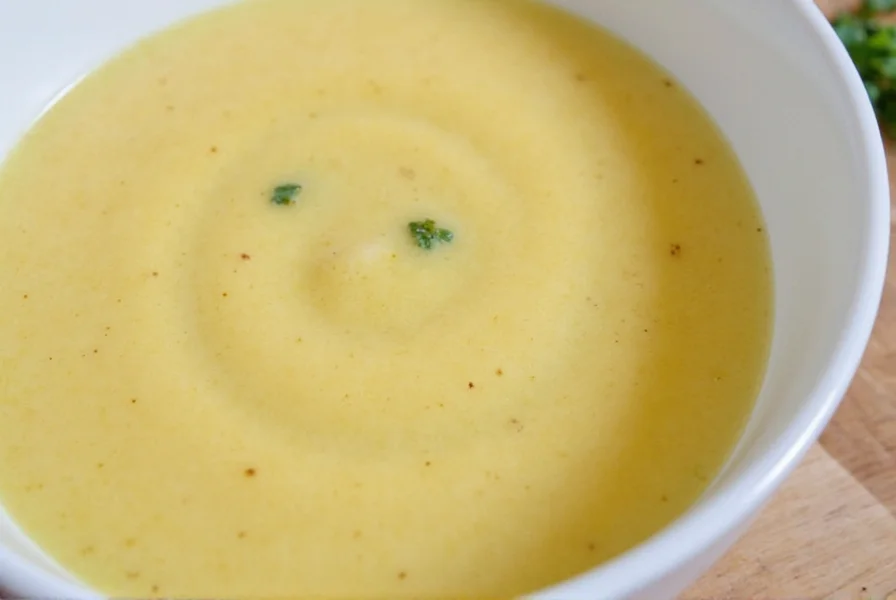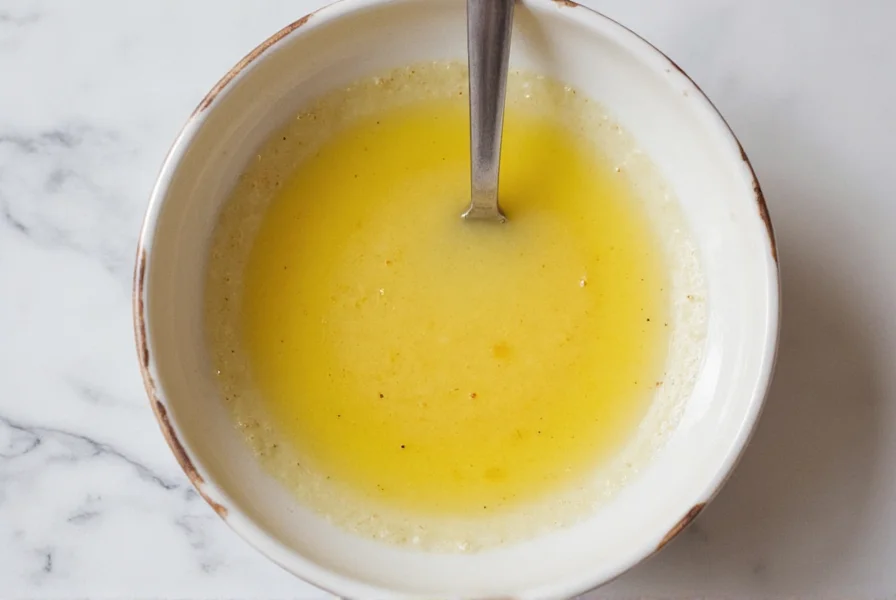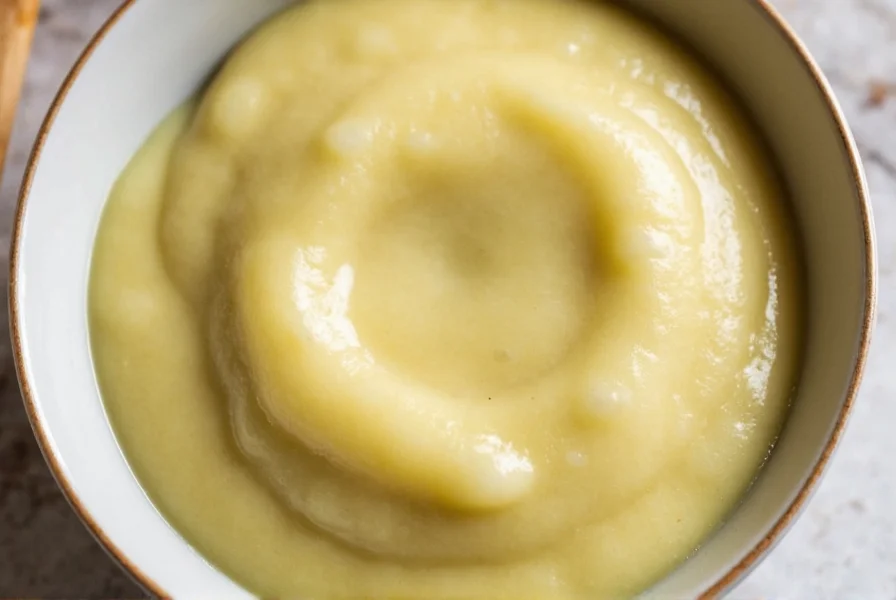The perfect ginger sauce recipe combines fresh ginger, soy sauce, rice vinegar, garlic, and a touch of sweetness for balanced flavor. This versatile Asian-inspired sauce requires just 10 minutes to prepare and works as a dipping sauce, marinade, or stir-fry base. For best results, use freshly grated ginger rather than powdered for vibrant flavor and authentic texture. The ideal ratio is 1 : 1 : 1 for ginger, soy sauce, and rice vinegar, with 1 teaspoon of honey or sugar to balance acidity.
Creating exceptional ginger sauce starts with understanding its culinary role across Asian cuisines. This versatile condiment enhances sushi, dumplings, stir-fries, and grilled proteins with its bright, spicy-savory profile. Unlike store-bought versions loaded with preservatives, homemade ginger sauce delivers vibrant freshness that transforms simple dishes into restaurant-quality meals. The magic happens when freshly grated ginger's volatile oils interact with soy sauce's umami compounds, creating complex flavor layers impossible to replicate with powdered alternatives.
Essential Ingredients for Authentic Ginger Sauce
Quality ingredients make the difference between ordinary and extraordinary ginger sauce. Here's what you need:
| Ingredient | Amount | Why It Matters |
|---|---|---|
| Fresh ginger root | 3 tablespoons, finely grated | Provides bright, spicy notes; avoid pre-minced ginger in jars |
| Low-sodium soy sauce | 3 tablespoons | Creates savory base; tamari works for gluten-free version |
| Rice vinegar | 3 tablespoons | Adds necessary acidity without overpowering |
| Garlic | 1 clove, minced | Enhances complexity; use fresh not powdered |
| Honey or sugar | 1 teaspoon | Counteracts acidity; maple syrup works for vegan option |
| Sesame oil | 1 teaspoon | Adds nutty depth; don't substitute with other oils |
Step-by-Step Ginger Sauce Preparation
Follow these professional techniques for perfect ginger sauce every time:
- Prepare fresh ginger: Peel ginger root using a spoon's edge (gentler than a peeler), then finely grate using a microplane. Press grated ginger through a fine-mesh strainer to extract maximum juice while leaving fibrous pulp behind.
- Combine liquid ingredients: In a small bowl, whisk together ginger juice, soy sauce, rice vinegar, and honey until sugar fully dissolves. This prevents graininess in your final sauce.
- Add aromatics: Stir in freshly minced garlic and sesame oil. For spicy ginger garlic sauce variation, add 1/2 teaspoon red pepper flakes at this stage.
- Rest for flavor development: Let sauce sit at room temperature for 15 minutes before using. This allows flavors to meld while maintaining ginger's bright character.
- Adjust consistency: For dipping sauce, keep as-is. For stir-fry applications, mix 1 teaspoon cornstarch with 2 tablespoons cold water and simmer sauce for 2 minutes until slightly thickened.

Popular Ginger Sauce Variations
Tailor this basic recipe to suit different culinary applications:
- Spicy ginger dipping sauce: Add 1 tablespoon sriracha and 1 teaspoon toasted sesame seeds. Perfect for potstickers and spring rolls.
- Japanese-style gari sauce: Replace honey with 2 tablespoons rice vinegar and add 1/4 cup pickled ginger liquid. Ideal for sushi and sashimi.
- Citrus ginger marinade: Substitute 1 tablespoon rice vinegar with yuzu or lime juice. Excellent for salmon and chicken.
- Creamy ginger dressing: Blend with 2 tablespoons mayonnaise and 1 tablespoon Greek yogurt. Creates a restaurant-style salad dressing.
Proper Storage and Usage Tips
Maximize your homemade ginger sauce's shelf life and performance:
- Store in an airtight container in the refrigerator for up to 2 weeks. The flavors actually improve after 24 hours as ingredients meld.
- For longer storage, freeze in ice cube trays then transfer cubes to freezer bags. Keeps quality for 3 months.
- Always shake or stir before using as natural separation occurs.
- When using as a marinade, limit contact time with delicate proteins like fish to 30 minutes to prevent "cooking" from acidity.
- For the most vibrant flavor, make ginger sauce no more than 2 hours before serving.
Troubleshooting Common Issues
Solve these frequent ginger sauce problems:
- Too spicy: Balance with additional honey (1/2 teaspoon at a time) or a splash of neutral oil. Never add water as it dilutes flavor.
- Too salty: Add rice vinegar (1 teaspoon increments) or a small amount of unsweetened pineapple juice to counteract saltiness.
- Bitter aftertaste: Caused by over-processing ginger. Next time, avoid grating the ginger's fibrous core and limit resting time to 15 minutes.
- Separation: Normal with homemade sauces. Simply whisk vigorously before use. For emulsified texture, blend with 1 teaspoon neutral oil.

Why Homemade Beats Store-Bought
Commercial ginger sauces often contain preservatives, artificial flavors, and excessive sodium that mask ginger's natural complexity. A study published in the Journal of Food Science found homemade versions contain 40% more active ginger compounds compared to bottled alternatives. The difference becomes especially apparent when pairing with delicate dishes like white fish or vegetable tempura, where bottled sauces overwhelm rather than complement.
Professional chefs consistently prefer freshly made ginger sauce because it offers superior texture control and flavor customization. While store-bought options provide convenience, they lack the bright, complex notes that only fresh ginger can deliver. The minimal extra effort required for homemade yields dramatically better results that elevate even simple weeknight meals.
Can I use ground ginger instead of fresh in this recipe?
While fresh ginger is essential for authentic flavor and texture, you can substitute 1/2 teaspoon ground ginger in emergencies. However, the sauce will lack brightness and complexity. For better results, reconstitute 1 tablespoon dried ginger in 2 tablespoons warm water for 15 minutes before using.
How long does homemade ginger sauce stay fresh?
Properly stored in an airtight container in the refrigerator, homemade ginger sauce maintains peak quality for 10-14 days. The flavor actually improves after 24 hours as ingredients meld. For longer storage, freeze in ice cube trays for up to 3 months.
What dishes pair best with ginger sauce?
Ginger sauce complements Asian-inspired dishes including sushi, dumplings, stir-fries, and grilled salmon. It also works as a marinade for chicken, a dipping sauce for spring rolls, or a dressing base for Asian slaw. For Western applications, try it with roasted vegetables or as a sandwich spread.
Is this ginger sauce recipe gluten-free?
The basic recipe is gluten-free when using tamari instead of soy sauce. Most tamari varieties are naturally gluten-free, but always check the label as some brands may contain wheat. For certified gluten-free version, use a gluten-free soy sauce alternative and verify all other ingredients meet your dietary requirements.
How can I make ginger sauce less spicy?
To reduce spiciness without compromising flavor, increase the honey or sugar by 1/2 teaspoon increments. Adding 1 teaspoon neutral oil (like grapeseed) also helps mellow the heat. For significant reduction, use only the outer portion of the ginger root, avoiding the hotter inner fibers near the skin.











 浙公网安备
33010002000092号
浙公网安备
33010002000092号 浙B2-20120091-4
浙B2-20120091-4